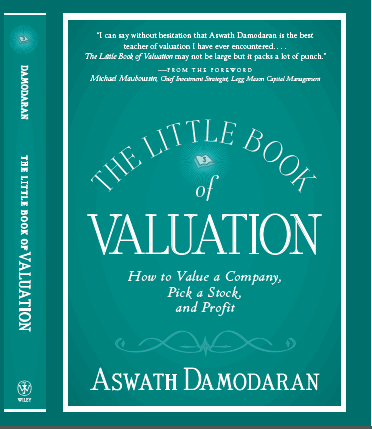Characteristics of firms with intangible assets
While
firms with intangible assets are diverse, there are some characteristics that
they do have in common. In this section, we will highlight those shared
factors, with the intent of expanding on the consequences for valuation in the
next section.
- Inconsistent accounting
for investments made in intangible assets: Accounting first principles
suggests a simple rule to separate capital expenses from operating
expenses. Any expense that creates benefits over many years is a capital
expense whereas expenses that generate benefits only in the current year
are operating expenses. Accountants hew to this distinction with
manufacturing firms, putting investments in plant, equipment and buildings
in the capital expense column and labor and raw material expenses in the
operating expense column. However, they seem to ignore these first
principles when it comes to firms with intangible assets. The most
significant capital expenditures made by technology and pharmaceutical
firms is in R&D, by consumer product companies in brand name
advertising and by consulting firms in training and recruiting personnel.
Using the argument that the benefits are too uncertain, accountants have
treated these expenses as operating expenses. As a consequence, firms with
intangible assets report small capital expenditures, relative to both
their size and growth potential.
- Generally
borrow less money: While this may be a generalization that does not
hold up for some sub-categories of firms with intangible assets, many of
them tend to use debt sparingly and have low debt ratios, relative to firms in
other sectors with similar earnings and cash flows. Some of the low financial
leverage can be attributed to the bias that bankers have towards lending
against tangible assets and some of it may reflect the fact that
technology and pharmaceutical firms are either in or have just emerged
from the growth phase in the life cycle.
- Equity Options:
While the use of equity options in management compensation is not unique
to firms with intangible assets, they seem to be much heavier users of
options and other forms of equity compensation. Again, some of this
behavior can be attributed to where these firms are in the life cycle
(closer to growth than mature), but some of it has to be related to how
dependent these firms are on retaining human capital.
 The
Little Book of Valuation
The
Little Book of Valuation